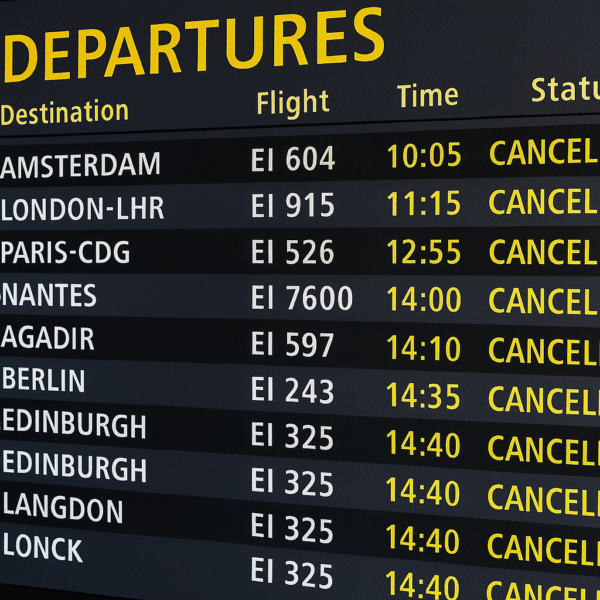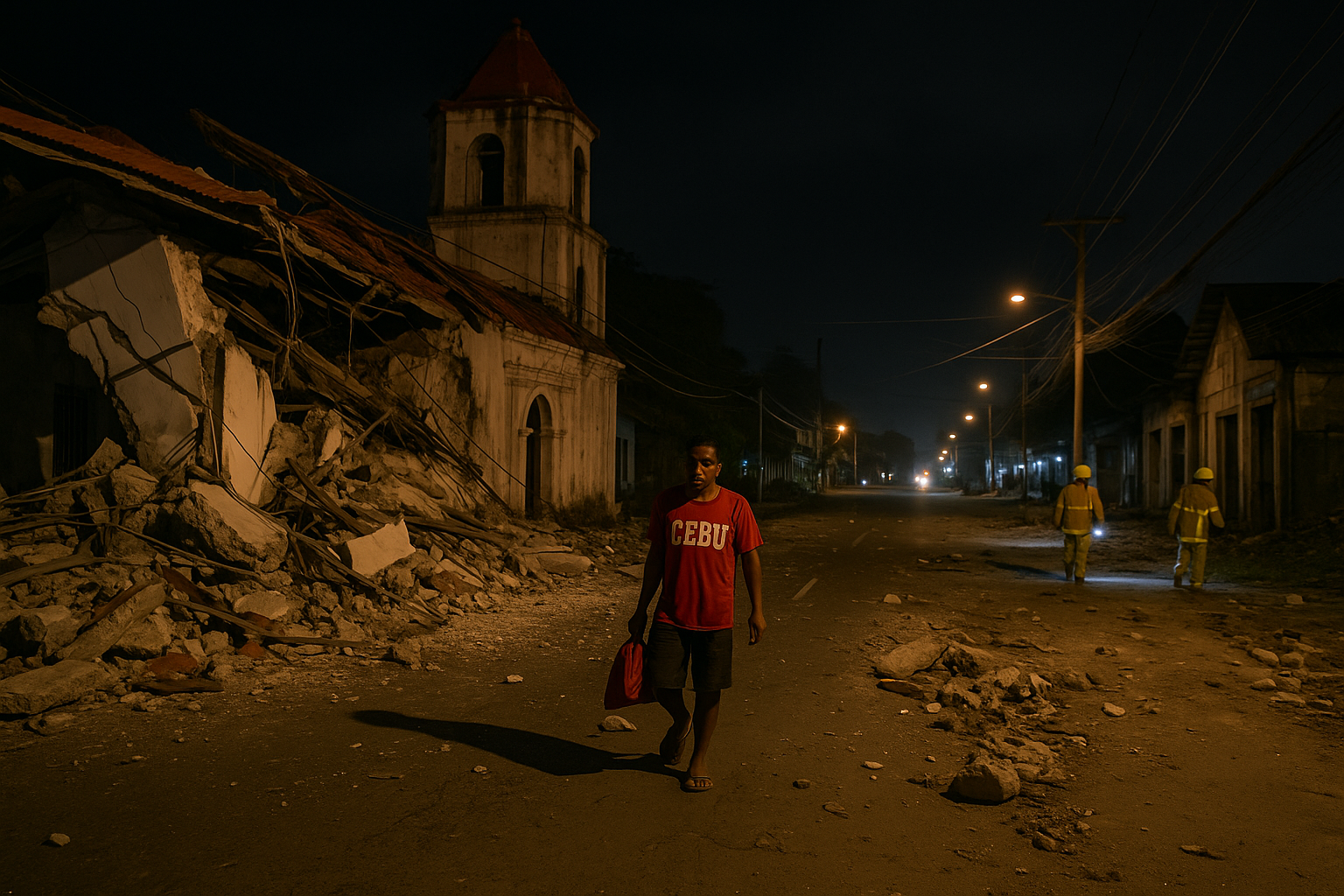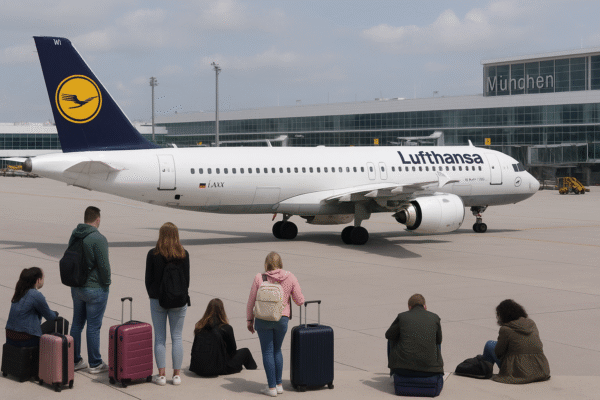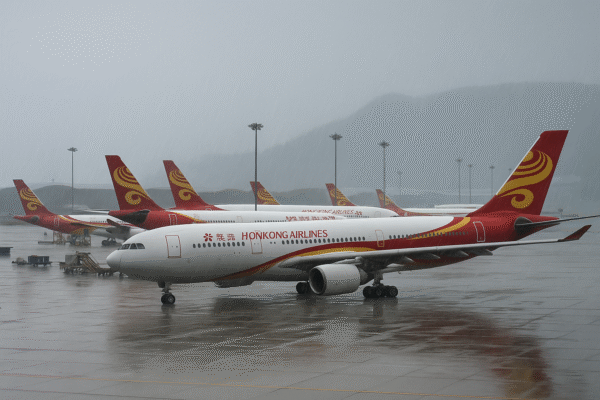Typhoon Ragasa slammed into Hong Kong and southern China with ferocious winds and relentless rain, forcing Hong Kong Airlines to move 80 percent of its fleet to safer airports. The airline acted quickly to protect its aircraft from damage, sending planes to destinations across mainland China and nearby countries. The move preserved its ability to resume service after the storm but left thousands of passengers without flights.
Cathay Pacific and Greater Bay Airlines followed the same approach, clearing their fleets from Hong Kong International Airport. The airport, one of the busiest in Asia, shut down operations as the typhoon arrived. Airlines canceled flights, hotels filled with stranded travelers, and Hong Kong’s usually thriving tourism economy came to a standstill.
Ragasa Becomes the Strongest Storm of the Year
The Hong Kong Observatory raised its highest Signal No. 10 warning as Ragasa roared in. Winds surged past 150 kilometers per hour, uprooting trees and battering coastal districts. Heavy rains triggered flash floods across parts of the city.
Before reaching Hong Kong, Ragasa tore through the Philippines and Taiwan. It destroyed infrastructure, caused landslides, and displaced thousands of families. Meteorologists tracked its path westward across Guangdong and Guangxi provinces, predicting the storm would weaken only after reaching northern Vietnam.
Airlines Act to Safeguard Fleets
Hong Kong Airlines and other carriers made bold decisions to relocate aircraft early in the week. Pilots ferried planes to safer airports while ground crews secured the terminals and suspended boarding operations. Airlines stressed safety first, recognizing that protecting fleets would allow them to restart service faster after the storm cleared.
Travelers experienced the full weight of these precautions. Business passengers missed connections, leisure tourists abandoned itineraries, and families postponed reunions. Customer service teams worked around the clock to rebook tickets and arrange accommodations, but frustration grew as the cancellations stretched into days.
Airlines updated passengers through apps, websites, and airport announcements. Staff distributed meal vouchers and provided hotel transfers for stranded customers. Travelers recognized the safety-first approach, though many voiced disappointment at the lack of available flights.
Typhoon Ragasa Hits Hong Kong Tourism
Tourism plays a central role in Hong Kong’s economy. The city welcomes millions of visitors each year, many from mainland China and Southeast Asia. Ragasa struck during a busy travel period, forcing hotels, restaurants, and attractions to close their doors.
In neighborhoods like Tsim Sha Tsui and Central, streets that usually bustle with tourists fell silent. Shops locked their shutters, ferries halted service, and tour groups stayed indoors. Hotel operators scrambled to manage cancellations and refunds while restaurants cut back on operations. For many businesses, the typhoon delivered a financial shock during a period of recovery.
Local Government Responds to Crisis
Authorities launched emergency measures to protect residents and tourists. Teams cleared fallen trees, restored power in affected districts, and transported vulnerable residents to temporary shelters. Officials warned people to avoid low-lying coastal areas as storm surges and high waves threatened safety.
The Hong Kong Observatory provided frequent updates, guiding airlines, ferry operators, and public transportation services. Authorities emphasized public safety and instructed residents to remain indoors until conditions stabilized.
Regional Disruptions Spread
Ragasa’s impact spread far beyond Hong Kong. Airports in Taiwan and southern Japan canceled or diverted flights. Coastal Chinese provinces closed ports and suspended high-speed train services. Floodwaters blocked roads in Guangdong, forcing local authorities to shut down traffic in vulnerable areas.
Cargo operators felt the blow as well. With Hong Kong serving as one of the world’s busiest shipping and logistics hubs, the airport shutdown disrupted the movement of goods across Asia. Businesses braced for delays in supply chains that depended on Hong Kong as a transit point.
Recovery After the Storm
As Ragasa moved west, airlines began preparing recovery plans. Crews inspected airport runways, terminals, and navigation systems for storm damage. Officials promised to reopen Hong Kong International Airport only after confirming full safety.
Airlines announced phased recovery schedules. They planned to recall relocated fleets from Japan, Macau, and mainland China once weather conditions stabilized. Flight operations would resume gradually, with priority given to stranded passengers. Experts warned that clearing the backlog of canceled flights might take several days.
Tourism businesses prepared to reopen as soon as possible. Hotels expected a wave of returning visitors, while tour operators rescheduled canceled packages. Restaurants and shops began restocking supplies, ready to welcome tourists once flights resumed.
Lessons from Ragasa
Ragasa highlighted the importance of disaster preparedness in Hong Kong’s aviation and tourism sectors. Airlines demonstrated resilience by relocating fleets early, protecting both passengers and infrastructure. Government agencies acted quickly to safeguard residents and provide essential services.
The storm also reinforced the need for continued investment in climate adaptation. With extreme weather events growing more frequent, Hong Kong must strengthen infrastructure and refine crisis management strategies. Tourism operators face the challenge of balancing visitor safety with economic survival during increasingly unpredictable seasons.
Conclusion
Typhoon Ragasa delivered one of the harshest tests Hong Kong has faced in recent years. Airlines relocated fleets, grounded flights, and disrupted thousands of travel plans. Tourists and residents endured canceled itineraries, closed hotels, and days of waiting. Yet Hong Kong showed resilience through its quick response, decisive actions, and dedication to safety.
As skies clear, Hong Kong prepares for recovery. Airlines will return aircraft, hotels will reopen, and tourists will eventually flow back into the city. Ragasa disrupted the moment, but it did not break Hong Kong’s spirit or its status as one of the world’s most vital travel hubs.
For more travel news like this, keep reading Global Travel Wire

















